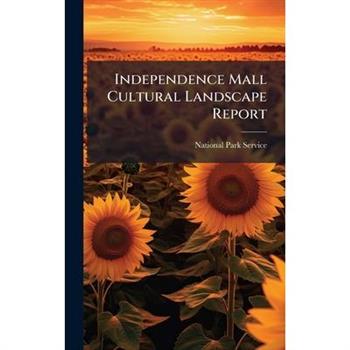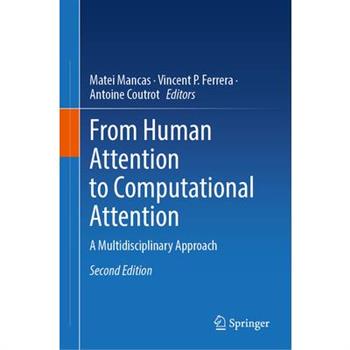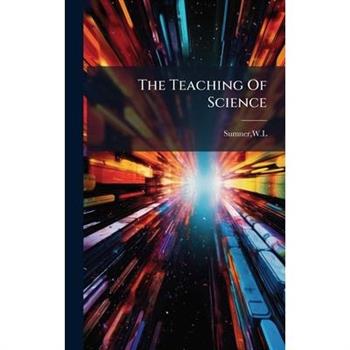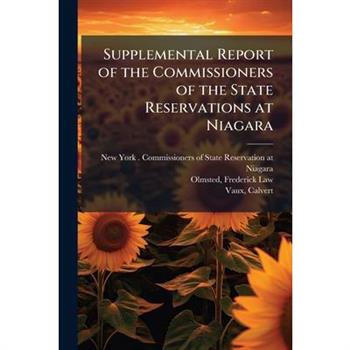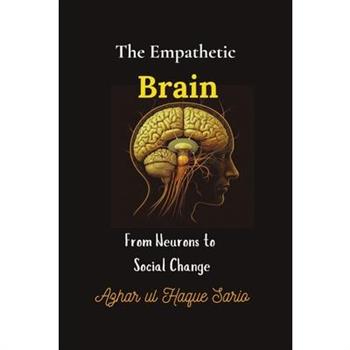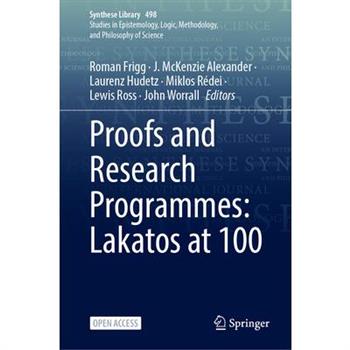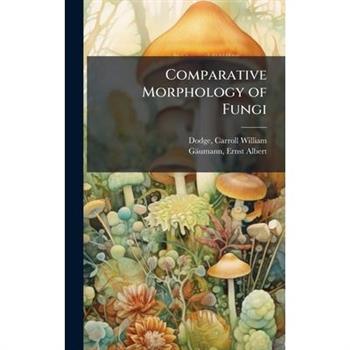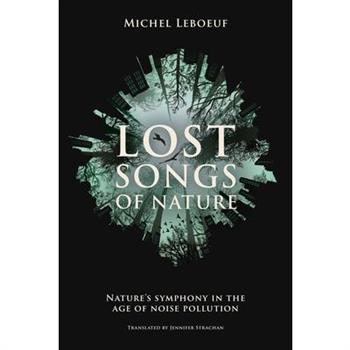A Course of Mechanical, Magnetical, Optical, Hydrostatical and Pneumatical Experiments; perform'd by Francis Hauksbee, and the Explanatory Lectures read by William Whiston, M.A
Unlock the wonders of science with "A Course of Mechanical, Magnetical, Optical, Hydrostatical and Pneumatical Experiments," a remarkable collection by Francis Hauksbee, accompanied by the enlightening lectures of William Whiston, M.A. This extraordinary volume, long out of print, has been meticulously restored by Alpha Editions for today s readers and future generations, making it not just a reprint, but a true collector s item and cultural treasure. Dive into a world where experimental science comes alive! Hauksbee s groundbreaking mechanical, magnetical, optical, hydrostatical, and pneumatical experiments illuminate the principles of physics in a way that captivates both the curious mind and the seasoned scholar. Each experiment serves as a gateway to understanding the natural world, blending excitement with educational value. This edition stands out not only for its historical significance but also for its accessibility, making it perfect for casual readers seeking inspiration and classic literature collectors looking to enrich their shelves. Experience the thrill of discovery as you explore the foundational experiments that shaped modern science. Don t miss your chance to own a piece of scientific history. Rediscover the magic of experimentation with this essential addition to your library, and let the legacy of Hauksbee and Whiston inspire your own explorations in the realm of knowledge!
Coral and Coral Reefs
Dive into the enchanting world of "Coral and Coral Reefs," a timeless exploration of the ocean's vibrant ecosystems, now revitalized by Alpha Editions. This captivating work, long out of print, has been meticulously restored for today s readers and future generations, making it not just a reprint, but a collector s item and a cultural treasure. In this beautifully illustrated volume, discover the intricate lives of coral species and the breathtaking biodiversity that thrives within reef habitats. From the delicate dance of underwater life to the urgent call for coral conservation, this book offers a profound insight into marine biology and the critical importance of sustainable marine practices. With its rich narrative and vivid descriptions, "Coral and Coral Reefs" appeals to casual readers seeking a deeper understanding of oceanography, as well as classic literature collectors who appreciate the historical significance of environmental science. This edition invites you to reflect on the beauty and fragility of our oceans, inspiring a new generation to cherish and protect these vital ecosystems. Don't miss your chance to own this remarkable work that bridges the past with the present, celebrating the wonders of coral reefs and the urgent need for marine conservation. Join us in preserving the legacy of our oceans order your copy today!
National Parks for the 21st Century
The National Park Service (NPS) was formed on August 25, 1916, and is the U.S. federal agency that manages all national parks, many national monuments, and other conservation and historical properties with various title designations. The National Park Service publishes various reports and documents each year about environmental issues, park safety, and specific parks around the country. These publications include titles like: Vegetation of Shark Slough, Everglades National Park, Status of Woody Species in Big Cyprus National Preserve, and The Nest Environment of the American Crocodile.This work has been selected by scholars as being culturally important, and is part of the knowledge base of civilization as we know it. This work was reproduced from the original artifact, and remains as true to the original work as possible. Therefore, you will see the original copyright references, library stamps (as most of these works have been housed in our most important libraries around the world), and other notations in the work.This work is in the public domain in the United States of America, and possibly other nations. Within the United States, you may freely copy and distribute this work, as no entity (individual or corporate) has a copyright on the body of the work.As a reproduction of a historical artifact, this work may contain missing or blurred pages, poor pictures, errant marks, etc. Scholars believe, and we concur, that this work is important enough to be preserved, reproduced, and made generally available to the public. We appreciate your support of the preservation process, and thank you for being an important part of keeping this knowledge alive and relevant.
Quotes
The National Park Service (NPS) was formed on August 25, 1916, and is the U.S. federal agency that manages all national parks, many national monuments, and other conservation and historical properties with various title designations. The National Park Service publishes various reports and documents each year about environmental issues, park safety, and specific parks around the country. These publications include titles like: Vegetation of Shark Slough, Everglades National Park, Status of Woody Species in Big Cyprus National Preserve, and The Nest Environment of the American Crocodile.This work has been selected by scholars as being culturally important, and is part of the knowledge base of civilization as we know it. This work was reproduced from the original artifact, and remains as true to the original work as possible. Therefore, you will see the original copyright references, library stamps (as most of these works have been housed in our most important libraries around the world), and other notations in the work.This work is in the public domain in the United States of America, and possibly other nations. Within the United States, you may freely copy and distribute this work, as no entity (individual or corporate) has a copyright on the body of the work.As a reproduction of a historical artifact, this work may contain missing or blurred pages, poor pictures, errant marks, etc. Scholars believe, and we concur, that this work is important enough to be preserved, reproduced, and made generally available to the public. We appreciate your support of the preservation process, and thank you for being an important part of keeping this knowledge alive and relevant.
Planning for Interpretation and Visitor Experience
The National Park Service (NPS) was formed on August 25, 1916, and is the U.S. federal agency that manages all national parks, many national monuments, and other conservation and historical properties with various title designations. The National Park Service publishes various reports and documents each year about environmental issues, park safety, and specific parks around the country. These publications include titles like: Vegetation of Shark Slough, Everglades National Park, Status of Woody Species in Big Cyprus National Preserve, and The Nest Environment of the American Crocodile.This work has been selected by scholars as being culturally important, and is part of the knowledge base of civilization as we know it. This work was reproduced from the original artifact, and remains as true to the original work as possible. Therefore, you will see the original copyright references, library stamps (as most of these works have been housed in our most important libraries around the world), and other notations in the work.This work is in the public domain in the United States of America, and possibly other nations. Within the United States, you may freely copy and distribute this work, as no entity (individual or corporate) has a copyright on the body of the work.As a reproduction of a historical artifact, this work may contain missing or blurred pages, poor pictures, errant marks, etc. Scholars believe, and we concur, that this work is important enough to be preserved, reproduced, and made generally available to the public. We appreciate your support of the preservation process, and thank you for being an important part of keeping this knowledge alive and relevant.
The National Importance Of Scientific And Industrial Research, Issues 1-8
This collection, titled "The National Importance Of Scientific And Industrial Research, Issues 1-8", compiles insights from leading figures such as George Ellery Hale, Elihu Root, and Henry Smith Pritchett. It emphasizes the critical role of scientific and industrial research in national progress and economic growth. The writings underscore the necessity of investing in research and development to foster innovation and maintain a competitive edge. Exploring aspects of policy, funding, and management, these issues advocate for a strategic approach to harnessing scientific advancements for the benefit of society. This work remains relevant for understanding the historical context of research priorities and their enduring impact on national strategies.This work has been selected by scholars as being culturally important, and is part of the knowledge base of civilization as we know it. This work was reproduced from the original artifact, and remains as true to the original work as possible. Therefore, you will see the original copyright references, library stamps (as most of these works have been housed in our most important libraries around the world), and other notations in the work.This work is in the public domain in the United States of America, and possibly other nations. Within the United States, you may freely copy and distribute this work, as no entity (individual or corporate) has a copyright on the body of the work.As a reproduction of a historical artifact, this work may contain missing or blurred pages, poor pictures, errant marks, etc. Scholars believe, and we concur, that this work is important enough to be preserved, reproduced, and made generally available to the public. We appreciate your support of the preservation process, and thank you for being an important part of keeping this knowledge alive and relevant.
Wilderness Area, Brooks Range, Northern Alaska
The National Park Service (NPS) was formed on August 25, 1916, and is the U.S. federal agency that manages all national parks, many national monuments, and other conservation and historical properties with various title designations. The National Park Service publishes various reports and documents each year about environmental issues, park safety, and specific parks around the country. These publications include titles like: Vegetation of Shark Slough, Everglades National Park, Status of Woody Species in Big Cyprus National Preserve, and The Nest Environment of the American Crocodile.This work has been selected by scholars as being culturally important, and is part of the knowledge base of civilization as we know it. This work was reproduced from the original artifact, and remains as true to the original work as possible. Therefore, you will see the original copyright references, library stamps (as most of these works have been housed in our most important libraries around the world), and other notations in the work.This work is in the public domain in the United States of America, and possibly other nations. Within the United States, you may freely copy and distribute this work, as no entity (individual or corporate) has a copyright on the body of the work.As a reproduction of a historical artifact, this work may contain missing or blurred pages, poor pictures, errant marks, etc. Scholars believe, and we concur, that this work is important enough to be preserved, reproduced, and made generally available to the public. We appreciate your support of the preservation process, and thank you for being an important part of keeping this knowledge alive and relevant.
Independence Mall Cultural Landscape Report
The National Park Service (NPS) was formed on August 25, 1916, and is the U.S. federal agency that manages all national parks, many national monuments, and other conservation and historical properties with various title designations. The National Park Service publishes various reports and documents each year about environmental issues, park safety, and specific parks around the country. These publications include titles like: Vegetation of Shark Slough, Everglades National Park, Status of Woody Species in Big Cyprus National Preserve, and The Nest Environment of the American Crocodile.This work has been selected by scholars as being culturally important, and is part of the knowledge base of civilization as we know it. This work was reproduced from the original artifact, and remains as true to the original work as possible. Therefore, you will see the original copyright references, library stamps (as most of these works have been housed in our most important libraries around the world), and other notations in the work.This work is in the public domain in the United States of America, and possibly other nations. Within the United States, you may freely copy and distribute this work, as no entity (individual or corporate) has a copyright on the body of the work.As a reproduction of a historical artifact, this work may contain missing or blurred pages, poor pictures, errant marks, etc. Scholars believe, and we concur, that this work is important enough to be preserved, reproduced, and made generally available to the public. We appreciate your support of the preservation process, and thank you for being an important part of keeping this knowledge alive and relevant.
Planning for Interpretation and Visitor Experience
The National Park Service (NPS) was formed on August 25, 1916, and is the U.S. federal agency that manages all national parks, many national monuments, and other conservation and historical properties with various title designations. The National Park Service publishes various reports and documents each year about environmental issues, park safety, and specific parks around the country. These publications include titles like: Vegetation of Shark Slough, Everglades National Park, Status of Woody Species in Big Cyprus National Preserve, and The Nest Environment of the American Crocodile.This work has been selected by scholars as being culturally important, and is part of the knowledge base of civilization as we know it. This work was reproduced from the original artifact, and remains as true to the original work as possible. Therefore, you will see the original copyright references, library stamps (as most of these works have been housed in our most important libraries around the world), and other notations in the work.This work is in the public domain in the United States of America, and possibly other nations. Within the United States, you may freely copy and distribute this work, as no entity (individual or corporate) has a copyright on the body of the work.As a reproduction of a historical artifact, this work may contain missing or blurred pages, poor pictures, errant marks, etc. Scholars believe, and we concur, that this work is important enough to be preserved, reproduced, and made generally available to the public. We appreciate your support of the preservation process, and thank you for being an important part of keeping this knowledge alive and relevant.
National Parks for the 21st Century
The National Park Service (NPS) was formed on August 25, 1916, and is the U.S. federal agency that manages all national parks, many national monuments, and other conservation and historical properties with various title designations. The National Park Service publishes various reports and documents each year about environmental issues, park safety, and specific parks around the country. These publications include titles like: Vegetation of Shark Slough, Everglades National Park, Status of Woody Species in Big Cyprus National Preserve, and The Nest Environment of the American Crocodile.This work has been selected by scholars as being culturally important, and is part of the knowledge base of civilization as we know it. This work was reproduced from the original artifact, and remains as true to the original work as possible. Therefore, you will see the original copyright references, library stamps (as most of these works have been housed in our most important libraries around the world), and other notations in the work.This work is in the public domain in the United States of America, and possibly other nations. Within the United States, you may freely copy and distribute this work, as no entity (individual or corporate) has a copyright on the body of the work.As a reproduction of a historical artifact, this work may contain missing or blurred pages, poor pictures, errant marks, etc. Scholars believe, and we concur, that this work is important enough to be preserved, reproduced, and made generally available to the public. We appreciate your support of the preservation process, and thank you for being an important part of keeping this knowledge alive and relevant.
Quotes
The National Park Service (NPS) was formed on August 25, 1916, and is the U.S. federal agency that manages all national parks, many national monuments, and other conservation and historical properties with various title designations. The National Park Service publishes various reports and documents each year about environmental issues, park safety, and specific parks around the country. These publications include titles like: Vegetation of Shark Slough, Everglades National Park, Status of Woody Species in Big Cyprus National Preserve, and The Nest Environment of the American Crocodile.This work has been selected by scholars as being culturally important, and is part of the knowledge base of civilization as we know it. This work was reproduced from the original artifact, and remains as true to the original work as possible. Therefore, you will see the original copyright references, library stamps (as most of these works have been housed in our most important libraries around the world), and other notations in the work.This work is in the public domain in the United States of America, and possibly other nations. Within the United States, you may freely copy and distribute this work, as no entity (individual or corporate) has a copyright on the body of the work.As a reproduction of a historical artifact, this work may contain missing or blurred pages, poor pictures, errant marks, etc. Scholars believe, and we concur, that this work is important enough to be preserved, reproduced, and made generally available to the public. We appreciate your support of the preservation process, and thank you for being an important part of keeping this knowledge alive and relevant.
Independence Mall Cultural Landscape Report
The National Park Service (NPS) was formed on August 25, 1916, and is the U.S. federal agency that manages all national parks, many national monuments, and other conservation and historical properties with various title designations. The National Park Service publishes various reports and documents each year about environmental issues, park safety, and specific parks around the country. These publications include titles like: Vegetation of Shark Slough, Everglades National Park, Status of Woody Species in Big Cyprus National Preserve, and The Nest Environment of the American Crocodile.This work has been selected by scholars as being culturally important, and is part of the knowledge base of civilization as we know it. This work was reproduced from the original artifact, and remains as true to the original work as possible. Therefore, you will see the original copyright references, library stamps (as most of these works have been housed in our most important libraries around the world), and other notations in the work.This work is in the public domain in the United States of America, and possibly other nations. Within the United States, you may freely copy and distribute this work, as no entity (individual or corporate) has a copyright on the body of the work.As a reproduction of a historical artifact, this work may contain missing or blurred pages, poor pictures, errant marks, etc. Scholars believe, and we concur, that this work is important enough to be preserved, reproduced, and made generally available to the public. We appreciate your support of the preservation process, and thank you for being an important part of keeping this knowledge alive and relevant.
Psychedelics in Psychiatry
Psychedelics in Psychiatry, Volume 181, the latest release in the International Review of Neurobiology series, highlights new advances in the field, with this new volume presenting interesting chapters written by an international board of authors. Chapters in this new volume include History of psychedelic drug science and molecular pharmacology, Pharmacological mechanisms and neuroplastic potential of non-psychedelic agents, Anti-inflammatory activity, Translational approaches for investigating the effects of psychedelics on cognitive and affective behaviors in rodents, Clinical pharmacology, Human neuroimaging fMRI, and more. Other chapters in this new release include Effects of psychedelics on human oscillatory brain activity, Molecular neuroimaging of psychedelic drug effects, Neurobiology of sub-psychedelic doses, Depression and related disorders, Addictions, Trauma disorders, Neurological disorders, and Challenges to the developing field of psychedelic medicine - political and ethical considerations and commercialization of therapy.
From Human Attention to Computational Attention
The new edition of this popular book introduces the study of attention, focusing on attention modeling, and addressing such themes as saliency models, signal detection, and different types of signals, including real-life applications. The first edition was written at a moment when the Deep Learning Neural Network (DNNs) techniques were just at their beginnings in terms of attention. Deep learning has recently become a key factor in attention prediction on images and video, and attention mechanisms have become key factors in deep learning models. The second edition tackles the arrival of DNNs for attention computing in images and video, and also discusses the attention mechanisms within DNNs (attention modules, transformers, grad-cam-based saliency maps, etc.). From Human Attention to Computational Attention 2nd Edition also explores the parallels between the brain structures and the DNN architectures to reveal how biomimetics can improve the model designs. The book is truly multi-disciplinary, collating work from psychology, neuroscience, engineering, and computer science.
The National Importance Of Scientific And Industrial Research, Issues 1-8
This collection, titled "The National Importance Of Scientific And Industrial Research, Issues 1-8", compiles insights from leading figures such as George Ellery Hale, Elihu Root, and Henry Smith Pritchett. It emphasizes the critical role of scientific and industrial research in national progress and economic growth. The writings underscore the necessity of investing in research and development to foster innovation and maintain a competitive edge. Exploring aspects of policy, funding, and management, these issues advocate for a strategic approach to harnessing scientific advancements for the benefit of society. This work remains relevant for understanding the historical context of research priorities and their enduring impact on national strategies.This work has been selected by scholars as being culturally important, and is part of the knowledge base of civilization as we know it. This work was reproduced from the original artifact, and remains as true to the original work as possible. Therefore, you will see the original copyright references, library stamps (as most of these works have been housed in our most important libraries around the world), and other notations in the work.This work is in the public domain in the United States of America, and possibly other nations. Within the United States, you may freely copy and distribute this work, as no entity (individual or corporate) has a copyright on the body of the work.As a reproduction of a historical artifact, this work may contain missing or blurred pages, poor pictures, errant marks, etc. Scholars believe, and we concur, that this work is important enough to be preserved, reproduced, and made generally available to the public. We appreciate your support of the preservation process, and thank you for being an important part of keeping this knowledge alive and relevant.
Illustrations Of British Mycology
"Illustrations Of British Mycology, Volume 2" by Thomas John Hussey (Mrs) offers a detailed exploration of the diverse and fascinating world of fungi native to Britain. This volume presents figures and descriptions of various funguses of interest and novelty, providing valuable insights into their characteristics and habitats.Originally published in the 19th century, this work showcases meticulous observations and artistic renderings, making it a significant contribution to the field of mycology. The detailed illustrations and descriptions serve as a valuable resource for both amateur enthusiasts and professional mycologists.This book stands as a testament to the rich natural history of Britain and the enduring human fascination with the fungal kingdom. Its historical significance and scientific value make it an essential addition to any collection focused on botany, mycology, or the history of science.This work has been selected by scholars as being culturally important, and is part of the knowledge base of civilization as we know it. This work was reproduced from the original artifact, and remains as true to the original work as possible. Therefore, you will see the original copyright references, library stamps (as most of these works have been housed in our most important libraries around the world), and other notations in the work.This work is in the public domain in the United States of America, and possibly other nations. Within the United States, you may freely copy and distribute this work, as no entity (individual or corporate) has a copyright on the body of the work.As a reproduction of a historical artifact, this work may contain missing or blurred pages, poor pictures, errant marks, etc. Scholars believe, and we concur, that this work is important enough to be preserved, reproduced, and made generally available to the public. We appreciate your support of the preservation process, and thank you for being an important part of keeping this knowledge alive and relevant.
Illustrations Of British Mycology
"Illustrations Of British Mycology, Volume 2" by Thomas John Hussey (Mrs) offers a detailed exploration of the diverse and fascinating world of fungi native to Britain. This volume presents figures and descriptions of various funguses of interest and novelty, providing valuable insights into their characteristics and habitats.Originally published in the 19th century, this work showcases meticulous observations and artistic renderings, making it a significant contribution to the field of mycology. The detailed illustrations and descriptions serve as a valuable resource for both amateur enthusiasts and professional mycologists.This book stands as a testament to the rich natural history of Britain and the enduring human fascination with the fungal kingdom. Its historical significance and scientific value make it an essential addition to any collection focused on botany, mycology, or the history of science.This work has been selected by scholars as being culturally important, and is part of the knowledge base of civilization as we know it. This work was reproduced from the original artifact, and remains as true to the original work as possible. Therefore, you will see the original copyright references, library stamps (as most of these works have been housed in our most important libraries around the world), and other notations in the work.This work is in the public domain in the United States of America, and possibly other nations. Within the United States, you may freely copy and distribute this work, as no entity (individual or corporate) has a copyright on the body of the work.As a reproduction of a historical artifact, this work may contain missing or blurred pages, poor pictures, errant marks, etc. Scholars believe, and we concur, that this work is important enough to be preserved, reproduced, and made generally available to the public. We appreciate your support of the preservation process, and thank you for being an important part of keeping this knowledge alive and relevant.
A Preliminary List Of Alabama Fungi, Issues 76-88
"A Preliminary List Of Alabama Fungi, Issues 76-88" by Lucien Marcus Underwood is a valuable resource for botanists, mycologists, and naturalists interested in the fungal flora of Alabama. This work compiles an extensive list of fungi identified in the state during the specified period, offering detailed descriptions and classifications that reflect Underwood's expertise in the field. The list serves as an important historical record of the biodiversity of Alabama and provides a foundation for contemporary research on fungal species and their ecological roles. Researchers and students of mycology will find this compilation indispensable for understanding the historical distribution and diversity of fungi in the southeastern United States. The work's enduring value lies in its meticulous documentation and contribution to the broader knowledge of plant and fungal life. It remains a significant reference for anyone studying the natural history of Alabama.This work has been selected by scholars as being culturally important, and is part of the knowledge base of civilization as we know it. This work was reproduced from the original artifact, and remains as true to the original work as possible. Therefore, you will see the original copyright references, library stamps (as most of these works have been housed in our most important libraries around the world), and other notations in the work.This work is in the public domain in the United States of America, and possibly other nations. Within the United States, you may freely copy and distribute this work, as no entity (individual or corporate) has a copyright on the body of the work.As a reproduction of a historical artifact, this work may contain missing or blurred pages, poor pictures, errant marks, etc. Scholars believe, and we concur, that this work is important enough to be preserved, reproduced, and made generally available to the public. We appreciate your support of the preservation process, and thank you for being an important part of keeping this knowledge alive and relevant.
A Preliminary List Of Alabama Fungi, Issues 76-88
"A Preliminary List Of Alabama Fungi, Issues 76-88" by Lucien Marcus Underwood is a valuable resource for botanists, mycologists, and naturalists interested in the fungal flora of Alabama. This work compiles an extensive list of fungi identified in the state during the specified period, offering detailed descriptions and classifications that reflect Underwood's expertise in the field. The list serves as an important historical record of the biodiversity of Alabama and provides a foundation for contemporary research on fungal species and their ecological roles. Researchers and students of mycology will find this compilation indispensable for understanding the historical distribution and diversity of fungi in the southeastern United States. The work's enduring value lies in its meticulous documentation and contribution to the broader knowledge of plant and fungal life. It remains a significant reference for anyone studying the natural history of Alabama.This work has been selected by scholars as being culturally important, and is part of the knowledge base of civilization as we know it. This work was reproduced from the original artifact, and remains as true to the original work as possible. Therefore, you will see the original copyright references, library stamps (as most of these works have been housed in our most important libraries around the world), and other notations in the work.This work is in the public domain in the United States of America, and possibly other nations. Within the United States, you may freely copy and distribute this work, as no entity (individual or corporate) has a copyright on the body of the work.As a reproduction of a historical artifact, this work may contain missing or blurred pages, poor pictures, errant marks, etc. Scholars believe, and we concur, that this work is important enough to be preserved, reproduced, and made generally available to the public. We appreciate your support of the preservation process, and thank you for being an important part of keeping this knowledge alive and relevant.
A Tale of Seven Elements
In 1913, English physicist Henry Moseley transformed our understanding of the elements by organizing them by atomic number, from hydrogen to uranium. However, it soon became obvious that researchers had yet to discover seven completely unknown elements. In this updated and expanded edition of his acclaimed book, Eric Scerri presents the intriguing stories of these elements--protactinium, hafnium, rhenium, technetium, francium, astatine, and promethium. It follows their discoveries through the two world wars, starting with protactinium in 1917 and ending with promethium in 1945. Scerri details the research leading to each discovery, the pivotal experiments, the chemists involved, the properties of each element, and their applications. For example, hafnium alloys, named after Copenhagen (hafnia), have some of the highest boiling points and are used in rocket thrusters like those on the Apollo Lunar Modules. Scerri then examines the integration of twenty-five new elements into the periodic table over the past fifty years and concludes with a new chapter on rare earth elements and the histories of their discoveries. The Second Edition of A Tale of Seven Elements vividly portrays the journey of chemical research, from missteps and disputes to the thrill of discovery, illuminating the researchers behind the elements, as much as their breakthroughs.
Humane Advocate
Humane Advocate, Vol. 13 (1917-1918) offers a fascinating glimpse into the early 20th-century animal welfare movement in Illinois. Published by the Illinois Humane Society, this volume chronicles the organization's activities and perspectives during a pivotal period in American history. Readers will find a wealth of information on animal protection efforts, including campaigns against animal cruelty, promotion of humane education, and advocacy for stronger animal protection laws. The content provides valuable insights into the social attitudes and ethical considerations surrounding animal welfare at the time, reflecting a growing awareness of the importance of treating animals with compassion and respect. This historical document serves as a valuable resource for researchers, historians, and anyone interested in the evolution of animal rights and the ongoing quest for a more humane world.This work has been selected by scholars as being culturally important, and is part of the knowledge base of civilization as we know it. This work was reproduced from the original artifact, and remains as true to the original work as possible. Therefore, you will see the original copyright references, library stamps (as most of these works have been housed in our most important libraries around the world), and other notations in the work.This work is in the public domain in the United States of America, and possibly other nations. Within the United States, you may freely copy and distribute this work, as no entity (individual or corporate) has a copyright on the body of the work.As a reproduction of a historical artifact, this work may contain missing or blurred pages, poor pictures, errant marks, etc. Scholars believe, and we concur, that this work is important enough to be preserved, reproduced, and made generally available to the public. We appreciate your support of the preservation process, and thank you for being an important part of keeping this knowledge alive and relevant.
New Mexico Water Supply
The BiblioGov Project is an effort to expand awareness of the public documents and records of the U.S. Government via print publications. In broadening the public understanding of government and its work, an enlightened democracy can grow and prosper. Ranging from historic Congressional Bills to the most recent Budget of the United States Government, the BiblioGov Project spans a wealth of government information. These works are now made available through an environmentally friendly, print-on-demand basis, using only what is necessary to meet the required demands of an interested public. We invite you to learn of the records of the U.S. Government, heightening the knowledge and debate that can lead from such publications.This work has been selected by scholars as being culturally important, and is part of the knowledge base of civilization as we know it. This work was reproduced from the original artifact, and remains as true to the original work as possible. Therefore, you will see the original copyright references, library stamps (as most of these works have been housed in our most important libraries around the world), and other notations in the work.This work is in the public domain in the United States of America, and possibly other nations. Within the United States, you may freely copy and distribute this work, as no entity (individual or corporate) has a copyright on the body of the work.As a reproduction of a historical artifact, this work may contain missing or blurred pages, poor pictures, errant marks, etc. Scholars believe, and we concur, that this work is important enough to be preserved, reproduced, and made generally available to the public. We appreciate your support of the preservation process, and thank you for being an important part of keeping this knowledge alive and relevant.
The Teaching Of Science
"The Teaching Of Science" explores effective methodologies and strategies for science education. This book delves into the core principles of teaching science, aiming to enhance scientific literacy and foster a deeper understanding of scientific concepts among students. W.L. Sumner provides insights into curriculum development, pedagogical techniques, and the overall improvement of science instruction. A valuable resource for educators, teacher trainers, and anyone involved in science education, this book offers practical guidance and theoretical frameworks to elevate the teaching of science at all levels. Readers will discover methods to make science more accessible, engaging, and relevant to students' lives, promoting a lifelong appreciation for scientific inquiry.This work has been selected by scholars as being culturally important, and is part of the knowledge base of civilization as we know it. This work was reproduced from the original artifact, and remains as true to the original work as possible. Therefore, you will see the original copyright references, library stamps (as most of these works have been housed in our most important libraries around the world), and other notations in the work.This work is in the public domain in the United States of America, and possibly other nations. Within the United States, you may freely copy and distribute this work, as no entity (individual or corporate) has a copyright on the body of the work.As a reproduction of a historical artifact, this work may contain missing or blurred pages, poor pictures, errant marks, etc. Scholars believe, and we concur, that this work is important enough to be preserved, reproduced, and made generally available to the public. We appreciate your support of the preservation process, and thank you for being an important part of keeping this knowledge alive and relevant.
Land and Water use in Klamath River Hydrographic Unit
Land and Water Use in Klamath River Hydrographic Unit, No. 94-6, Vol. 1, a comprehensive report by the California Department of Water Resources, examines the intricate relationship between land and water utilization within the Klamath River basin. This detailed study, originally published in 1962, provides an invaluable historical perspective on resource management practices and their impact on the ecological balance of the region.The report delves into the hydrological characteristics of the Klamath River, analyzing water distribution, irrigation techniques, and the effects of various land uses on water quality and availability. It offers insights into the challenges and opportunities associated with sustainable resource management, making it a crucial resource for researchers, policymakers, and anyone interested in the long-term health of the Klamath River ecosystem.This work has been selected by scholars as being culturally important, and is part of the knowledge base of civilization as we know it. This work was reproduced from the original artifact, and remains as true to the original work as possible. Therefore, you will see the original copyright references, library stamps (as most of these works have been housed in our most important libraries around the world), and other notations in the work.This work is in the public domain in the United States of America, and possibly other nations. Within the United States, you may freely copy and distribute this work, as no entity (individual or corporate) has a copyright on the body of the work.As a reproduction of a historical artifact, this work may contain missing or blurred pages, poor pictures, errant marks, etc. Scholars believe, and we concur, that this work is important enough to be preserved, reproduced, and made generally available to the public. We appreciate your support of the preservation process, and thank you for being an important part of keeping this knowledge alive and relevant.
Land and Water use in Klamath River Hydrographic Unit
Land and Water Use in Klamath River Hydrographic Unit, No. 94-6, Vol. 1, a comprehensive report by the California Department of Water Resources, examines the intricate relationship between land and water utilization within the Klamath River basin. This detailed study, originally published in 1962, provides an invaluable historical perspective on resource management practices and their impact on the ecological balance of the region.The report delves into the hydrological characteristics of the Klamath River, analyzing water distribution, irrigation techniques, and the effects of various land uses on water quality and availability. It offers insights into the challenges and opportunities associated with sustainable resource management, making it a crucial resource for researchers, policymakers, and anyone interested in the long-term health of the Klamath River ecosystem.This work has been selected by scholars as being culturally important, and is part of the knowledge base of civilization as we know it. This work was reproduced from the original artifact, and remains as true to the original work as possible. Therefore, you will see the original copyright references, library stamps (as most of these works have been housed in our most important libraries around the world), and other notations in the work.This work is in the public domain in the United States of America, and possibly other nations. Within the United States, you may freely copy and distribute this work, as no entity (individual or corporate) has a copyright on the body of the work.As a reproduction of a historical artifact, this work may contain missing or blurred pages, poor pictures, errant marks, etc. Scholars believe, and we concur, that this work is important enough to be preserved, reproduced, and made generally available to the public. We appreciate your support of the preservation process, and thank you for being an important part of keeping this knowledge alive and relevant.
Land and Water use in Klamath River Hydrographic Unit
Land and Water Use in Klamath River Hydrographic Unit, No. 94-6 vol. 2, authored by the California Department of Water Resources, is a detailed examination of land and water management practices within the Klamath River region. Published in 1962, this volume provides an in-depth analysis of the hydrographic unit, offering insights into historical water resource allocation and land utilization. It serves as a valuable resource for understanding the ecological and economic dynamics of the area during a pivotal period of development. The study explores the challenges and strategies related to balancing agricultural, industrial, and environmental needs in a complex watershed. With its focus on the Klamath River, this work remains relevant for contemporary discussions on sustainable resource management and the impact of human activities on natural ecosystems. Researchers, policymakers, and anyone interested in the historical context of water and land use in California will find this volume to be an essential reference.This work has been selected by scholars as being culturally important, and is part of the knowledge base of civilization as we know it. This work was reproduced from the original artifact, and remains as true to the original work as possible. Therefore, you will see the original copyright references, library stamps (as most of these works have been housed in our most important libraries around the world), and other notations in the work.This work is in the public domain in the United States of America, and possibly other nations. Within the United States, you may freely copy and distribute this work, as no entity (individual or corporate) has a copyright on the body of the work.As a reproduction of a historical artifact, this work may contain missing or blurred pages, poor pictures, errant marks, etc. Scholars believe, and we concur, that this work is important enough to be preserved, reproduced, and made generally available to the public. We appreciate your support of the preservation process, and thank you for being an important part of keeping this knowledge alive and relevant.
New Mexico Water Supply
The BiblioGov Project is an effort to expand awareness of the public documents and records of the U.S. Government via print publications. In broadening the public understanding of government and its work, an enlightened democracy can grow and prosper. Ranging from historic Congressional Bills to the most recent Budget of the United States Government, the BiblioGov Project spans a wealth of government information. These works are now made available through an environmentally friendly, print-on-demand basis, using only what is necessary to meet the required demands of an interested public. We invite you to learn of the records of the U.S. Government, heightening the knowledge and debate that can lead from such publications.This work has been selected by scholars as being culturally important, and is part of the knowledge base of civilization as we know it. This work was reproduced from the original artifact, and remains as true to the original work as possible. Therefore, you will see the original copyright references, library stamps (as most of these works have been housed in our most important libraries around the world), and other notations in the work.This work is in the public domain in the United States of America, and possibly other nations. Within the United States, you may freely copy and distribute this work, as no entity (individual or corporate) has a copyright on the body of the work.As a reproduction of a historical artifact, this work may contain missing or blurred pages, poor pictures, errant marks, etc. Scholars believe, and we concur, that this work is important enough to be preserved, reproduced, and made generally available to the public. We appreciate your support of the preservation process, and thank you for being an important part of keeping this knowledge alive and relevant.
Deserts
Explore the fascinating world of deserts in this comprehensive overview. From the scorching sands of the Sahara to the arid landscapes of the American Southwest, "Deserts" delves into the unique ecosystems and diverse life forms that thrive in these extreme environments. Discover the adaptations of plants and animals that allow them to survive with limited water and intense heat. Learn about the geology, climate, and geography of various desert regions around the globe. Whether you are a student, a nature enthusiast, or simply curious about the natural world, this book offers a captivating journey into the heart of the desert.This work has been selected by scholars as being culturally important, and is part of the knowledge base of civilization as we know it. This work was reproduced from the original artifact, and remains as true to the original work as possible. Therefore, you will see the original copyright references, library stamps (as most of these works have been housed in our most important libraries around the world), and other notations in the work.This work is in the public domain in the United States of America, and possibly other nations. Within the United States, you may freely copy and distribute this work, as no entity (individual or corporate) has a copyright on the body of the work.As a reproduction of a historical artifact, this work may contain missing or blurred pages, poor pictures, errant marks, etc. Scholars believe, and we concur, that this work is important enough to be preserved, reproduced, and made generally available to the public. We appreciate your support of the preservation process, and thank you for being an important part of keeping this knowledge alive and relevant.
Supplemental Report of the Commissioners of the State Reservations at Niagara
This is a supplemental report from the Commissioners of the State Reservations at Niagara, dating back to 1887. It provides insights into the early planning and management of the Niagara Reservation, offering a historical perspective on conservation efforts and park development in the late 19th century.The document includes contributions from prominent figures such as Frederick Law Olmsted and Calvert Vaux, renowned landscape architects known for their work on Central Park and other significant public spaces. Their involvement underscores the importance placed on preserving the natural beauty of Niagara Falls and creating a public space that harmonized with the surrounding environment. This report offers valuable information for historians, landscape architects, and anyone interested in the history of environmental conservation and park planning in the United States.This work has been selected by scholars as being culturally important, and is part of the knowledge base of civilization as we know it. This work was reproduced from the original artifact, and remains as true to the original work as possible. Therefore, you will see the original copyright references, library stamps (as most of these works have been housed in our most important libraries around the world), and other notations in the work.This work is in the public domain in the United States of America, and possibly other nations. Within the United States, you may freely copy and distribute this work, as no entity (individual or corporate) has a copyright on the body of the work.As a reproduction of a historical artifact, this work may contain missing or blurred pages, poor pictures, errant marks, etc. Scholars believe, and we concur, that this work is important enough to be preserved, reproduced, and made generally available to the public. We appreciate your support of the preservation process, and thank you for being an important part of keeping this knowledge alive and relevant.
Stain Technique
"Stain Technique," originally published in 1926, is a comprehensive guide to the methods and applications of staining in biological and medical research. Written by W.H. Emig, this classic text provides detailed instructions on preparing and using various stains to visualize cellular structures under the microscope. This book is an invaluable resource for students, researchers, and professionals in fields such as histology, cytology, and pathology. It covers a wide range of staining techniques, including both simple and differential staining methods, and offers practical advice on troubleshooting common problems. With clear explanations and detailed protocols, "Stain Technique" remains a relevant and essential reference for anyone working with microscopic specimens.This work has been selected by scholars as being culturally important, and is part of the knowledge base of civilization as we know it. This work was reproduced from the original artifact, and remains as true to the original work as possible. Therefore, you will see the original copyright references, library stamps (as most of these works have been housed in our most important libraries around the world), and other notations in the work.This work is in the public domain in the United States of America, and possibly other nations. Within the United States, you may freely copy and distribute this work, as no entity (individual or corporate) has a copyright on the body of the work.As a reproduction of a historical artifact, this work may contain missing or blurred pages, poor pictures, errant marks, etc. Scholars believe, and we concur, that this work is important enough to be preserved, reproduced, and made generally available to the public. We appreciate your support of the preservation process, and thank you for being an important part of keeping this knowledge alive and relevant.
Natural Resources of Pennsylvania
Natural Resources of Pennsylvania explores the diverse natural resources found within the state. This book delves into the geology, ecology, and conservation efforts surrounding Pennsylvania's valuable assets. From its forests and waterways to its mineral deposits, this comprehensive overview examines the importance of responsible resource management and sustainability. Readers will gain insights into the challenges and opportunities associated with balancing economic development and environmental preservation. Discover the historical context and current practices shaping the future of Pennsylvania's natural landscape. A valuable resource for students, policymakers, and anyone interested in understanding and protecting the natural wealth of Pennsylvania.This work has been selected by scholars as being culturally important, and is part of the knowledge base of civilization as we know it. This work was reproduced from the original artifact, and remains as true to the original work as possible. Therefore, you will see the original copyright references, library stamps (as most of these works have been housed in our most important libraries around the world), and other notations in the work.This work is in the public domain in the United States of America, and possibly other nations. Within the United States, you may freely copy and distribute this work, as no entity (individual or corporate) has a copyright on the body of the work.As a reproduction of a historical artifact, this work may contain missing or blurred pages, poor pictures, errant marks, etc. Scholars believe, and we concur, that this work is important enough to be preserved, reproduced, and made generally available to the public. We appreciate your support of the preservation process, and thank you for being an important part of keeping this knowledge alive and relevant.
Arid and Semi-Arid Zones of Mexico
Arid and Semi-Arid Zones of Mexico: A Comprehensive Exploration of Biodiversity, Ecology, and Conservation is an in-depth, multidisciplinary examination of one of Mexico's most ecologically distinctive and biologically rich landscapes. Comprising 14 chapters authored by subject-matter experts, this reference work investigates the climatic, physical, and biological characteristics of Mexico's principal arid and semi-arid regions. The volume presents detailed assessments of emblematic plant and animal species, while also exploring the ecological roles of nursery processes and the consequences of human activity on fragile desert ecosystems. Conservation priorities are addressed through evaluations of protected natural areas and the safeguarding of native germplasm resources. Additionally, the contributors document the medicinal and biologically active products derived from arid-zone flora, highlighting their ecological and cultural significance. Each chapter integrates case studies and findings from Mexico's key arid regions - the Baja California Peninsula, Chihuahuan Desert, Sonoran Desert, and Tehuac獺n-Cuicatl獺n Valley. Key Features -Comprehensive ecological, biological, and conservation analysis of Mexico's arid and semi-arid regions-In-depth focus on emblematic fauna and flora-Examination of ecological processes, human impacts, and conservation strategies-Assessment of protected areas and germplasm conservation efforts using cacti as umbrella taxa-Documentation of natural products with medicinal and biological applications-Integrative analyses across four major arid regions, highlighting ecological patterns and biodiversity trends
The Empathetic Brain
Ever wondered how we connect with others? "The Empathetic Brain: From Neurons to Social Change" dives deep into the science of empathy. It explores how our brains allow us to understand and share feelings. We'll uncover the role of mirror neurons. These amazing cells fire when we do an action AND when we see someone else do it. The book also looks at how emotions can be contagious. It explains how our brains and bodies react to others' feelings. We'll examine how empathy develops in children. We'll see how it impacts our relationships, workplaces, and communities. This book goes beyond the basics. It connects empathy to social issues like justice and environmentalism. It explores the challenges of empathy in the digital age. It even touches on the ethics of AI. "The Empathetic Brain" offers a unique blend of science, psychology, and social commentary. It provides practical tools for cultivating empathy in your own life. This book will help you build stronger relationships, navigate conflicts, and make a positive impact on the world.
Proofs and Research Programmes: Lakatos at 100
This open access book offers new insights into issues raised in philosophy of mathematics and in philosophy of science by Imre Lakatos. Lakatos was one of the most significant philosophers of the 20th Century, and his ideas remain important and relevant today. November 2022 saw the centenary of Lakatos's birth, and the event was marked by an international conference held at the LSE - where Lakatos made his career after he had emigrated from Hungary to England. This volume consists of a selection of papers presented at the conference along with two additional contributions to debates about Lakatos's continuing influence and importance.
Comparative Morphology of Fungi
"Comparative Morphology of Fungi" presents a detailed study of fungal structures and their evolutionary relationships. Authored by Carroll William Dodge and Ernst Albert G瓣umann, this work delves into the microscopic and macroscopic characteristics that define various fungal groups, providing a comprehensive overview of fungal diversity. It explores the complexities of fungal morphology, offering valuable insights into the classification and identification of these organisms.Originally published in 1927, this book remains a foundational resource for mycologists, botanists, and students interested in the fascinating world of fungi. Its meticulous descriptions and comparative analyses make it an essential reference for understanding the evolutionary adaptations and ecological roles of these ubiquitous organisms. The book's enduring value lies in its detailed approach to a subject that continues to captivate researchers and nature enthusiasts alike.This work has been selected by scholars as being culturally important, and is part of the knowledge base of civilization as we know it. This work was reproduced from the original artifact, and remains as true to the original work as possible. Therefore, you will see the original copyright references, library stamps (as most of these works have been housed in our most important libraries around the world), and other notations in the work.This work is in the public domain in the United States of America, and possibly other nations. Within the United States, you may freely copy and distribute this work, as no entity (individual or corporate) has a copyright on the body of the work.As a reproduction of a historical artifact, this work may contain missing or blurred pages, poor pictures, errant marks, etc. Scholars believe, and we concur, that this work is important enough to be preserved, reproduced, and made generally available to the public. We appreciate your support of the preservation process, and thank you for being an important part of keeping this knowledge alive and relevant.
Advances in Organometallic Chemistry
Advances in Organometallic Chemistry, Volume 83, the latest release in this longstanding serial, is known for its comprehensive coverage of topics in organometallic synthesis, reactions, mechanisms, homogeneous catalysis, and more. Chapters in this new release include Pd-catalysis: a useful tool in the field of polymer synthesis. Recent advances and applications, Modern Mechanistic Approaches for the Depolymerization of Commodity Plastics via Homogeneous Metal Catalysis, Functionalization of fullerenes by transition metal catalyzed cyclization reactions, and Synergistic Metal-Ligand Reactivity in Half-Sandwich Complexes of Fe, Co, and Ni for Bond Activation and Catalysis.
Water Treatment
The book presents latest research in methods for limiting the environmental and economic costs of the processes involved in using non-traditional sources of water, to increase the efficiency of treatment processes and optimize water recovery and reuse, research has focused on recovery of resources from their associated waste streams.
Biophysics of Brain Imaging
This book takes a multiscale overview and theoretical framework for all existing brain imaging modalities. It also presents technological development for data fusion and underlying biophysical models. The book also provides problems and exercises useful for undergraduate and graduate courses.
A Natural History of Quiet Waters
Although swamps today are recognized as one of the richest and most prolific natural systems on Earth, they have long held a mysterious and tenuous place in America's history and culture. Ernest Hemingway equated them with madness and death in "Big Two-hearted River." We have images of Humphrey Bogart covered with leeches while slogging through a swamp in the film The African Queen. In our culture, swamps have been associated with mystery and evil, and we spent generations draining, filling, and otherwise destroying them. Indeed, in the four centuries since the European colonists arrived, we have lost more than half of the forested wetlands that were native to America.Swamps have until now received little attention, despite recent efforts to protect them. With A Natural History of Quiet Waters: Swamps and Wetlands of the Mid-Atlantic Coast, Curtis Badger takes us on a personalized trip to the swamp, providing an insightful look at the nature of these special places, and arguing persuasively that these natural systems should be protected, not destroyed.Using such locations as the Pocomoke River and the Great Dismal Swamp as exemplars of swamps in general, Badger examines the natural history of wetlands, and also relates the role they have played in the history and culture of the mid-Atlantic coast. A great iron furnace and its surrounding village once stood in a cypress swamp along Nassawango Creek in Maryland. The Great Dismal was a safe haven for runaway slaves, and it has been the source of many ghostly tales and legends.Although swamps have for centuries been cast in a negative light, they are wonderfully productive places, a refuge for migrating songbirds, insects, fish, animals, and rare plants. Swamps and wetlands provide us with clean water, they protect uplands from flooding, and their waters serve as a spawning ground for valuable fish and shellfish. And, Badger writes, they provide us with an island of forested wilderness, a place where one can launch a canoe and temporarily escape the irritations of the modern world.Notwithstanding the government's goal of "no net loss" of wetlands, swamps are still being drained, filled, and paved over each year. With this book, Badger invites us to appreciate these special places and the natural communities they support.
Ocean Beach
A charmingly illustrated nature guide to Ocean Beach and the coastal ecology of San Francisco.Grab your beach blanket and your puffy jacket (this is San Francisco, after all) and get ready to see Ocean Beach like never before. Longtime local surfer and scientist Eddy Rubin celebrates this magical sandy stretch through stories of its animals and plants and the natural and human forces that have shaped this coastal environment. From sand dollars and seaweed to the snowy plovers in the dunes, and stretching out to the seals and whales offshore, Rubin profiles twenty-nine local flora and fauna with wonder and curiosity. To explain the why and how, he also teaches readers about the weather and geological forces that have created this unique sandy ecology. Lifetime lovers of Ocean Beach and new neighbors alike will delight in Rubin's guide, brought vividly to life by more than forty full-color artworks by illustrator Greg Wright. With this guide, Rubin invites readers to explore the place where ocean and land meet, to learn from surfers and fishermen about what's out in the waves, and to protect this shared expanse of sandy shoreline.
Native Plants of British Columbia's Coastal Dry Belt
An innovative guide to the native plants of the coastal dry belt, or "rain shadow" of the Pacific Northwest, including southeast Vancouver Island, the Gulf Islands and some parts of the mainland coast, such as Port Angeles and Bellingham, WA. This guide takes readers on a botanical journey through the unique ecosystems of British Columbia and northern Washington's Coastal Dry Belt. Organized by plant communities and habitats, it is an invaluable resource for naturalists, students, and nature enthusiasts alike. Authors Hans Roemer, an experienced ecologist, and Mary Sanseverino, an accomplished photographer, combine their expertise to present native plant species in their natural settings, illustrating the intricate relationships between plants and their environments. Covering diverse areas from Douglas-fir forests to Garry oak woodlands, and from shrub-covered wetlands to beach and sand dunes, each section provides detailed descriptions, vibrant photographs, and insightful commentary. The guide facilitates plant identification within specific communities, highlights the ecological significance of each habitat, and offers practical tips for field observations. Native Plants of BC's Coastal Dry Belt aims to educate and inspire a broad audience, deepening the understanding of this distinctive landscape's botanical treasures. Through its engaging presentation, this essential guide serves as both an educational tool and a source of inspiration for continued exploration and appreciation of British Columbia's coastal plant life.
















